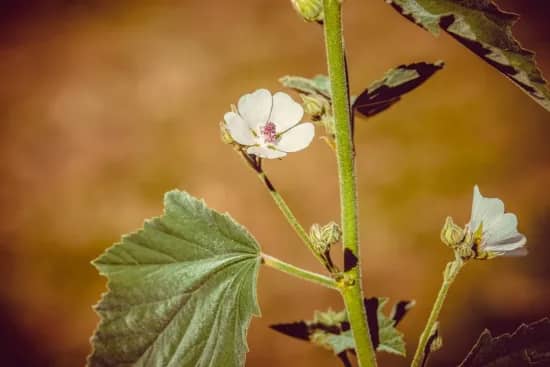[[{“value”:”
BY EMILY JOY MENESESBARISTA MAGAZINE ONLINE
Featured photo by Leon Contreras
Marshmallows are synonymous with summertime—the sweet, sticky treat can be found at nearly every beach bonfire, and many coffeehouses are incorporating the ingredient into the increasingly popular s’mores latte. However, this food’s history may surprise you: In ancient times, the marshmallow plant was used in various places for medicinal purposes. In today’s installment of “Know Your Ingredients,“ we’ll explore the history of the marshmallow and try out a s’mores latte recipe!
Ancient Origins and Medicinal Use of Marshmallow
Marshmallow originated from the mallow plant (Althaea officinalis), which grows in marshes (hence the name marshmallow) and is native to Eastern Europe and North Africa. The earliest consumption of the plant can be traced to the ancient Egyptians, as early as 2000 B.C. The sap was used medicinally to treat sore throats, coughs, and other illnesses. It was typically mixed with honey to form a sweet, sticky substance—an early form of what we know the marshmallow to be today. Throughout the Middle Ages, the use of marshmallow as medicine would continue in Egypt, Greece, and Italy.
A Turning Point: The Industrial Revolution
Marshmallow’s transition from medicine to confectionary would happen in 19th century France. French bakers would whip the plant’s sap with sugar and egg whites—a labor-intensive process that yielded a highly sought-after treat. During the Industrial Revolution, changes in technology and food production would propel marshmallow production; however, the marshmallow sap—which was difficult to extract—would be replaced with gelatin, allowing for larger-scale production of the sweets.
Today’s marshmallows are made in the same way: with gelatin, sugar, and other flavorings. And though the exact origins of the iconic s’more are still debated, the first published recipe of the treat is credited to Girl Scout troop leader Loretta Scott Crew, whose recipe can be found in a 1927 Girl Scout guidebook.
Marshmallows and Specialty Coffee Today
Today, the modern marshmallow can be found gracing specialty-coffee menus in the winter and summer alike. Claudia Álvarez of La Casita del Café, a coffee cart operating out of Vandermeer Nursery in Ontario, Canada, shares how having a s’mores latte on her menu last August served as a bridge between her roots in Mexico and her new home in Canada.
“I was introduced to s’mores here in Canada, and I believe it was part of the experience of (me) merging into Canadian culture,” she shares. “I decided to incorporate the treat into a latte, (to capture) all those great camping memories that many Canadians carry with them.”
The drink, available iced, is a fusion of marshmallow, oat milk, and chocolate, topped with vanilla cold foam and a cookie crumble.
Play with the flavor of marshmallow at home or at your café with this Monin S’mores Latte!
Recipe: Monin S’mores Latte
Ingredients:
1 oz Monin toasted marshmallow syrup
½ oz chocolate syrup
2 shots of espresso
8 oz milk (dairy or nondairy)
1 toasted marshmallow (for garnishing)
1 graham cracker
Method:
In a bowl, use a spoon to crush your graham cracker into crumbs. Set aside.Pour the marshmallow syrup, chocolate syrup, and espresso into your mug or glass. Steam your milk and top it off—or, for iced drinks, add milk and ice to your glass. Garnish with your toasted marshmallow, graham cracker crumbs, and an extra drizzle of chocolate syrup. Enjoy!
ABOUT THE AUTHOR
Emily Joy Meneses (she/they) is a writer and musician based in Los Angeles. Her hobbies include foraging, cortados, vintage synths, and connecting with her Filipino roots through music, art, food, and beverage.
Subscribe and More!
Out now: It’s the April + May 2024 issue of Barista Magazine! Read it for free with our digital edition. And for more than three years’ worth of issues, visit our digital edition archives here.
You can order a hard copy of the magazine through our online store here, or start a subscription for one year or two.
“}]]


